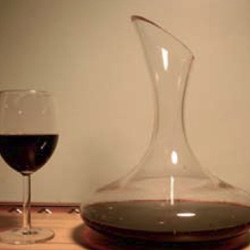OPEN SESAME
Let’s start with getting at the stuff, via a plastic or high-class natural cork (unless you unscrew it, and that is another chapter). The important thing, what kind of corkscrew? First and foremost the classics, which have two kinds of snake (the screwy part of the device that bites into the cork) that are either rounded or machined. Avoid the machined snake as it has very sharp edges, which are OK for plastic or compound corks, but murder, my dear, for older and more delicate ‘bouchons’. I would always go for a waiter’s corkscrew, which has a little blade for taking off the top of the capsule, a two-stage lever and a rounded snake that doesn’t slice. Alternatively, you might try a classic Screwpull, which is very gentle on older corks. Ruining a cork because of the screw is a crying shame, especially if you have just laid out €800 for a bottle of Chateau Margaux 1982.
If these still aren’t your cup of tea, then might I suggest the dual prong, known in the trade as the butler’s friend. It has two flat parallel prongs that can remove the cork without a blemish. If you can get the capsule off without any damage, you can of course polish the wine off, refill the bottle with something vastly inferior, then replace cork and capsule without anyone being the wiser. Butlers were fond of this trick, apparently, hence the nickname.
ROCK-A-BYE BABY
Some people like putting the bottle in cradles that tilt it so that the sediment stays away from the top, and these come in all shapes and sizes, from artisan baskets to high-tech bits of stainless steel that resemble a NASA launch site. The best that I ever saw was one that works with a crank and turn by turn pours the wine, thus avoiding any muck getting into the glass of an honoured guest. I recently saw one on e-bay going for $210, so they aren’t cheap. Another accessory for pouring is the ring that prevents wine from dripping and fits around the bottle neck. these are useful and can prevent embarrassing moments…imagine you have just been introduced to your better half’s parents, poured them a glass of something very impressive, then left a horrendous red stain on their cream tablecloth. Not good.
FLAT WIDE BOTTOM
Let’s forget the ‘decant or not’ debate and assume you want to ‘wow’ people with a beautiful vessel to serve the wine. I always feel that decanters should be fairly heavy and wide bottomed, like a ship’s decanter, which was designed to avoid the port going over in a storm. There are of course some wonderful creations, Riedel have a swanneck, which is a jug with a long, tapering, narrow pipe, supremely elegant, but meant that my friend serving the wine had to be in Dieppe while we were drinking it in Dover. Tall narrow decanters are lovely, but can be a bit unstable. There are of course flasks and jugs that some prefer, which can be very graceful.
You might point out that I have omitted glasses and wine storage, but to me these are not accessories so much as the main items of clothing, without which the various accoutrements I have discussed would be like standing naked wearing a necklace, earrings and bangles. Delightful, perhaps, but what would their purpose be?







